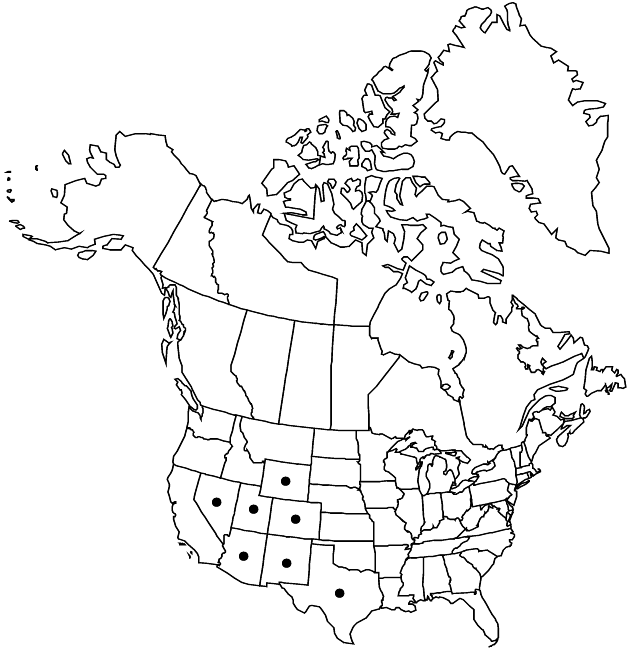Difference between revisions of "Hieracium fendleri"
Bonplandia (Hanover) 9: 173. 1861.
FNA>Volume Importer |
FNA>Volume Importer |
(No difference)
| |
Revision as of 18:37, 24 September 2019
Plants 8–30(–40+) cm (herbage often glaucous). Stems proximally piloso-hirsute (hairs 2–5+ mm), distally usually ± piloso-hirsute (hairs 1–3+ mm) and stellate-pubescent, sometimes stipitate-glandular as well. Leaves: basal 3–8+, cauline 0–1(–3); blades elliptic or oval to oblanceolate to lanceolate, 20–70 × 12–25(–40) mm, lengths 1.5–6+ times widths, bases cuneate, margins entire or denticulate, apices rounded to acute, faces piloso-hirsute (hairs 1–3+ mm). Heads 2–5+ in ± corymbiform arrays. Peduncles usually stellate-pubescent, sometimes piloso-hirsute and/or stipitate-glandular as well. Calyculi: bractlets 5—8+. Involucres cylindric to campanulate, (10–)12–15+ mm. Phyllaries 13–16+, apices ± acuminate, abaxial faces usually piloso-hirsute and stellate-pubescent, sometimes stipitate-glandular as well. Florets 15–30+; corollas pale yellow to ochroleucous, 7–13+ mm. Cypselae urceolate, 5–7 mm; pappi of 50–60+, ± stramineous bristles in 2+ series, 5–8+ mm.
Phenology: Flowering (May–)Jun–Aug(–Sep).
Habitat: Pine woods, near springs
Elevation: 1400–2900 m
Distribution

Ariz., Colo., Nev., N.Mex., Tex., Utah, Wyo., Mexico, Central America (Guatemala).
Discussion
Selected References
None.